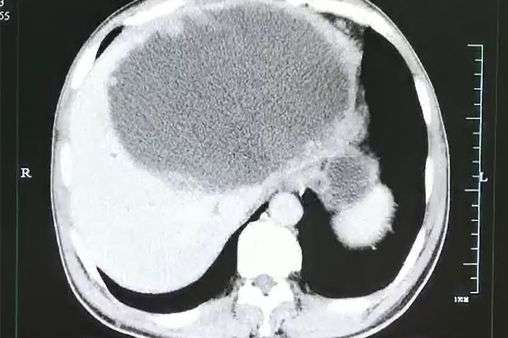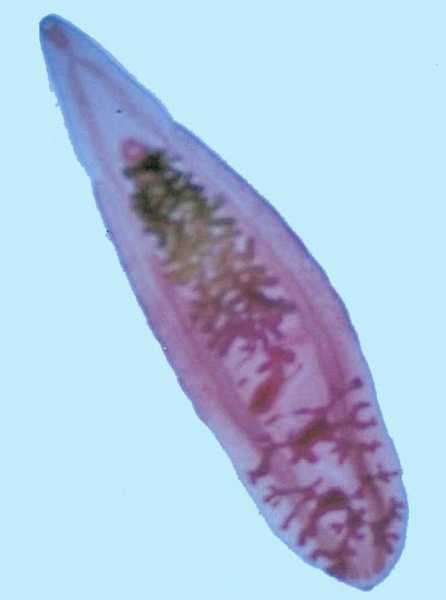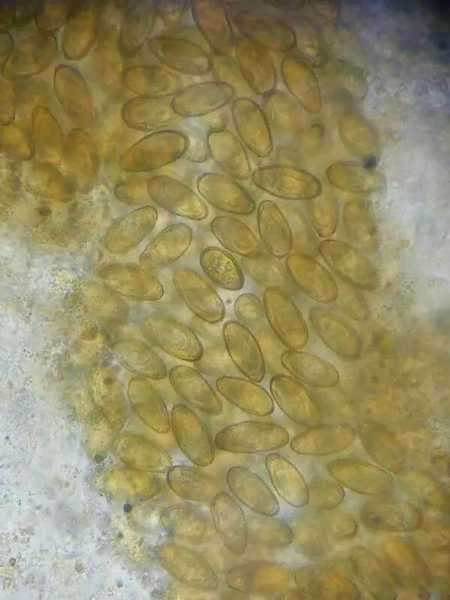A Chinese man, referred to in hospital records as Mr Xie, had a diseased-section of his liver removed only for doctors to discover that it was filled with “countless” lightbulb-shaped eggs
-

Couple with coronavirus given ankle tags because they refuse to self-isolate
-

Rapist who smeared faeces on himself in court judged 'unfit' for caning
-

Coronavirus outbreak at farm now has 120 confirmed cases of deadly bug

Mr Xie’s inflamed liver became filled with fluid and tumour-like growths due to a parasitic fluke infection (Image: AsiaWire / Hangzhou 1st Hospital)
A Chinese man who ate undercooked fish lost half a liver after an army of parasitic flatworms laid eggs inside him.
The patient, named only as Mr Xie, sought medical help complaining of a loss of appetite, fatigue, abdominal pain and diarrhoea.
The 55-year-old said he had been struggling for the past four months, a report by Hangzhou First People's Hospital recorded.
He was later diagnosed with clonorchiasis – an infection disease caused by the parasitic flatworm known as the Chinese liver fluke.
Doctors were "shocked" when scans of Mr Xie showed the left lobe of his liver had been "emptied" and replaced by a pus-filled sac measuring 19cm long, 18cm wide and 12cm deep.

A Chinese liver fluke
(Image: AsiaWire / Ajia)
Numerous tumours had started growing on the walls of the sac.
Medics drained fluids from the growth and reduced its size by roughly half.
When scans taken three weeks later showed inflammation and tumours remained on the liver, surgeons were called in to chop out the diseased section of the organ.
Once they did they discovered "countless" lightbulb-shaped eggs occupying the dead liver tissue.
Mr Xie recalled eating a delicacy of purposely undercooked fish in his hometown, where locals briefly rinse the meat under hot water for a few seconds.
He is believed to have ingested flatworm cysts, which later hatched in his intestines and swam to his liver, "feeding" off his tissue and inhabiting his bile ducts.
The early stages of Chinese liver fluke may present with mild to no symptoms, leaving the host unaware, the facility's report said.

Doctors found eggs in his liver
(Image: AsiaWire / Wang Ying)
The parasite has a "frightening reproductive rate", producing some 1,400 to 2,000 eggs, which can live for between 20 and 30 years.
In serious cases, involving the presence of thousands of worms, it can lead to the destruction of liver tissue, liver cirrhosis, and a fatal bile duct cancer known as cholangiocarcinoma.
According to the World Health Organization, free-swimming Chinese river fluke larvae known as miracidia are first ingested by snails before they reproduce and leave the first host to find a freshwater fish.
The penetrate beneath the fish's scales, encyst, and wait for the animal to be eaten by a mammal, later hatching in the digestive tract in order to complete the cycle.
Sourse: www.mirror.co.uk





